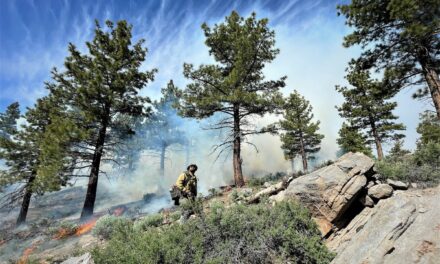- Tahoe’s Nevada Beach Tops the List of Hard-to-Book Campgrounds - 07/17/2024
- Cannabis Watershed Protection Program Cleans Up Illegal Grow Sites - 07/10/2024
- French Fire - 07/05/2024
I read that CO2 in our atmosphere is now more than 300 parts per million. Doesn’t this mean that we’re too late to avoid the worst impacts of climate change?
— Karl Bren, Richmond, VA
Actually the amount of carbon dioxide (CO2) in the atmosphere today is roughly 390 parts per million (ppm). And that’s not good news. “Experts agree that this level cannot be sustained for many decades without potentially catastrophic consequences,” reports the Geos Institute, an Oregon-based non-profit and consulting firm that uses science to help people predict, reduce and prepare for climate change.
While we’re unlikely to get atmospheric CO2 concentrations down as low as they were (275 ppm) before we started pumping pollution skyward during the Industrial Revolution, climate scientists and green leaders agree that 350 ppm would be a tolerable upper limit. Prior to 2007 scientists weren’t sure what emissions reduction goal to shoot for, but new evidence led researchers to reach consensus on 350 ppm if we wished to have a planet, in the words of NASA climatologist James Hansen, “similar to the one on which civilization developed and to which life on earth is adapted.”
The non-profit 350.org, launched in 2008 by writer and activist Bill McKibben and others to raise awareness about global warming, has circled the proverbial wagons around the cause of reducing atmospheric CO2 to 350 ppm. The group has enlisted the help of thousands of student volunteers around the world to mobilize public support for reducing humanity’s carbon footprint.
McKibben, whose 1989 book The End of Nature detailed the potential effects of climate change and remains one of the most influential environmental books of all time, believes that 350 ppm is attainable. “We’re like the patient that goes to the doctor and learns he’s overweight, or his cholesterol is too high. He doesn’t die immediately—but until he changes his lifestyle and gets back down to the safe zone, he’s at more risk for heart attack or stroke,” says McKibben. “The planet is in its danger zone because we’ve poured too much carbon into the atmosphere, and we’re starting to see signs of real trouble: melting ice caps, rapidly spreading drought. We need to scramble back as quickly as we can to safety.”
“Scrambling back” will entail nothing short of transforming our energy infrastructure, including how we transport people and goods and power our structures. According to 350.org, it means building solar arrays instead of coal plants, planting trees instead of cutting forests, increasing energy efficiency and reducing waste. “Getting to 350 means developing a thousand different solutions—all of which will become much easier if we have a global treaty grounded in the latest science and built around the principles of equity and justice,” the group reports. “To get this kind of treaty, we need a movement of people who care enough about our shared global future to get involved and make their voices heard.”
The group is working to create an international grassroots movement to influence political dynamics and implement solutions that show the benefits of moving to a clean energy economy. 350 ppm, while merely a number, represents humanity’s potential capacity to solve the most pressing problem it has faced; it also represents a target for international negotiators to aim for in forging an effective global warming treaty.
CONTACTS: Geos Institute, www.geosinstitute.org; 350.org, www.350.org.
EarthTalk® is written and edited by Roddy Scheer and Doug Moss and is a registered trademark of E – The Environmental Magazine (www.emagazine.com). Send questions to: earthtalk@emagazine.com. Subscribe: www.emagazine.com/subscribe. Free Trial Issue: www.emagazine.com/trial.












